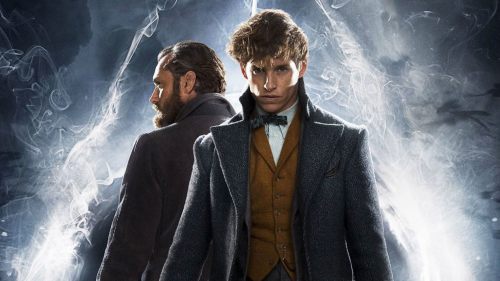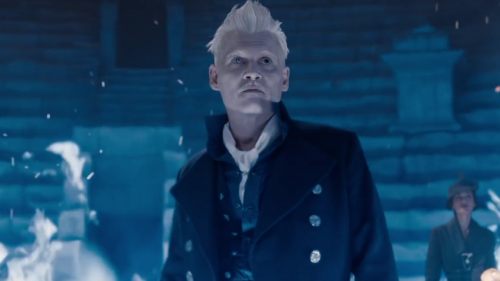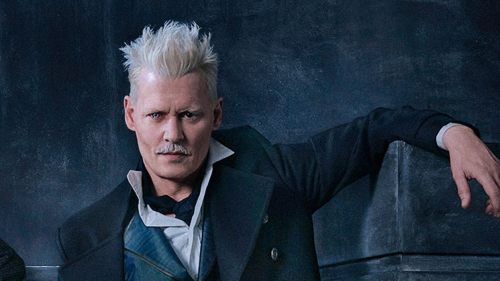HARRY POTTER Turns Twenty: A Look Back At The Magic
Harry Potter and the Philosopher’s Stone hit U.K. shelves twenty years ago today. It might not seem like it’s been that long – the U.S. edition, Sorcerer’s Stone, wouldn’t arrive until ’98 – and the Wizarding World wouldn’t take complete hold of global culture until the first film in 2001. By then, however, the series was already halfway written and the seeds entirely planted, charging full steam ahead and inspiring kids of the internet age to get lost in books en masse.
Twenty years. Those who were the right age to buy what Harry Potter was selling remained so until the end. Entire childhoods were lived in the decade and a half between the first pages and the final frames. An entire generation came of age alongside a uniquely unifying literary and cinematic touchstone, and I don’t think our lives would be quite the same without it.
It all began as whispers of a world unknown. The first chapter, “The Boy Who Lived,” was told entirely through the eyes of muggles: the Dursleys, cartoonish tormentors whose moral and emotional complexity would reveal itself as the series progressed. They were skeptics, or at least they appeared to be, and we were allowed to experience the first hints of magical strangeness through their skepticism. People in cloaks celebrating some unseen victory while mourning some unseen loss - oh, and a cat scrutinizing a roadmap. Who were these bizarre people? What on Earth were they talking about? Twenty years ago, we couldn’t wait to find out. Twenty years later, there’s hardly a soul who doesn’t know the answer.
Just beyond the thin veil of our reality lay a world much like ours - a world of schools and students and uniforms and teachers, introducing several countries to the House system while making fantastical the reality of those that had it. The brave, the loyal, the wise, the ambitious, sorted into families and given seals to honour, as staircases moved to hide a castle’s secrets. Robes and wands and brooms and cauldrons, mysteries that seemed at once nebulous and without origin, were cobbled together from mythologies the world over and given specific academic purpose. Not only were Witches and Wizards real in this world, but they were something you could aspire to be!
Perhaps the use of past tense there is incorrect. The Harry Potter Worlds at the various Universal Studios are less attractions and more re-creations, with everything from Ollivander’s Wand Shop to the Leaky Cauldron. If you have the means, there are now places where you can live in a version of this world for a day. Where you can purchase robes, pick out wands, and drink Butterbeer to your heart’s content. Even if you don’t, there’s little chance you’ve missed being sorted into a house via Pottermore or some other online community. Not only do fans know the ins and outs of this world, they’ve come to establish their own place within it… But why?
Why have we, as a society, decided to continue throwing ourselves into the fantasies we grew up with? Why do we still yearn to wear the scarves of our chosen Houses and wield the wands that suit us? Why are we still attached to the magical mechanisms of a world that can never be?
For lack of a better word, Harry Potter was formative. It was formative when it came to identity, acting as the rare water cooler conversation you were sure to find both online and in person no matter where you lived, but more than that, it was formative to our understanding of a grown-up world and its grown-up problems. It was modern myth-making, drawing us in with wonder and wands and fantasies of flight, but it was grounded firmly in ideas of love, loyalty, friendship, and the necessary heartbreak of seeing one’s heroes as human and flawed. As familiar as we became with floating candles and speaking portraits, we were also forced to familiarize ourselves with everything that lay behind the veneer of smiling faces. Betrayal, manipulation, and ultimately, failure.
As much as the Dursleys were revealed to have more good in them than their caricatured first appearance, the likes of Albus Dumbledore and Severus Snape went from similarly broad sketches to frustrating conversation topics, owing to our inability to categorize them as easily as we were once able to. There was a scheme behind Dumbledore’s kindly demeanor, longing behind Snape’s hardened stares, and cruelty behind the pristine image Harry once had of his father. What was once a world of light and darkness became increasingly grey, guiding us along as we started to see our world for what it was, and its people for who they were: complicated.
Harry’s paternal relationships? Complicated. His duties as the “chosen one”? Complicated. The descent of an ordered, structured world into chaos and fascism? Oh so bloody complicated, especially to younger minds…
Death? Unfathomable.
Harry Potter may be children’s fantasy, but it does not shy away from death. It’s born from the death of Harry’s parents, punctuated by the deaths of those he grows close to, and the story doesn’t end until Harry himself, all of seventeen years of age, finds the maturity to accept that he’s going die. But where there is loss and all the fear that comes with it, there is also love. When Harry reaches this realization, seven books and eight films later, he’s greeted by those who have left him. Now, on the precipice of adulthood, his mother’s loving sacrifice has ceased to be a magical protection. In a moment of subtext crystallizing and giving way to the tangible, it’s the love he’s been afforded all his life that ultimately gives him the courage he needs. It is no longer some mysterious universal force protecting him like an armour, but something he carries with him, everywhere he goes… but he does not carry it alone.
Harry loves, and he is loved. It’s love that separates him from Voldemort, his opposite and equal, and it’s love that teaches him to be kind even when everything inside him keeps pushing him to cruelty. It’s that same love that forms the crux of Harry Potter and the Cursed Child, a staged entry that feels true to the original novels as it expands on their thematic core, delving further into the difficulties of love between people who are fundamentally different. And it all began as whispers we didn’t understand - the defeat of a villain who rejected love and became twisted, and the boy who lived because he was loved.
That situation repeats itself seventeen years later at the Battle of Hogwarts, and twenty-three years after that, with our heroes as adults traveling back in time to the day James and Lilly Potter were murdered, the moment it all began. The painful genesis that forms the basis of Harry Potter, the boy, and Harry Potter, the saga. A story we’re reminded of in Cursed Child’s meta-text because of how formative it was in Philosopher’s Stone.
Whatever may come his way, whatever dark magic or isolation or internal rage, Harry Potter’s journey is toward love and kindness. It is a constant journey, perhaps one with no end-point, and that lesson will always be pertinent. It’s why we still gravitate towards robes and wands, what characters like Harry, Ron and Hermoine wore when they found community and what they used for both mischief and heroism. It’s why we wear the colours of the attributes we value in ourselves - because we’ve seen those facets come to fruition, in the midst of other people when they needed it most. It’s why we keep yearning to go back to Hogwarts, where friendships were formed, lifelong lessons learned, and fundamental truths of our experience discovered…
What’s the first defining feature you ever noticed about Harry?
As much as our scars are born from tragedy, they are healed and made to take perfect form by those that love us, until they make us who we are. As tragic as that lightning bolt may be, it would not exist without the most powerful magic of all.
“Love as powerful as your mother's for you leaves its own mark. To have been loved so deeply, even though the person who loved us is gone, will give us some protection forever.”



